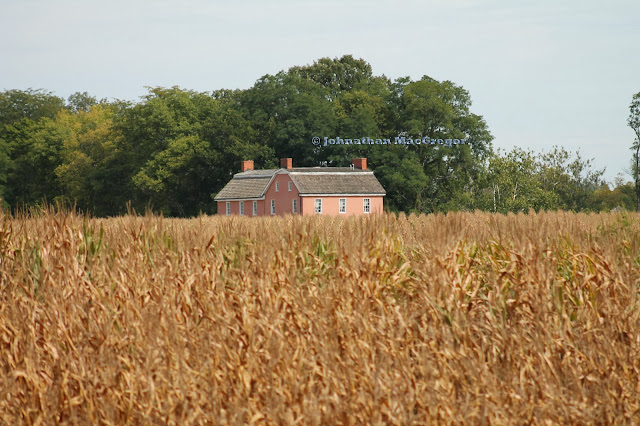Yellow Springs is such a nice little town, a bustle of progressive-minded people in the middle of the Ohio farm land. A huge part of that is
Antioch University, which is still alive and kicking despite
financial troubles in recent years. If Antioch College had never started classes in 1853, it's pretty unlikely that Hugh Taylor Birch would have had cause to donate the 1000 acres of Glen Helen to the school in 1929.
 |
| Making life for this little guy a little harder, I would guess. |
There's a 2 dollar fee for parking, and that lot is off Corry Street--across from Antioch. The big wood sign you see on the way to John Bryan SP is an access to the education center. No hiker parking at that location--for other guidelines on visiting (including trail maps!),
check this out.
It was a pretty warm day, but the humidity was high and the breeze non-existent down by the creek made things stifling. All the same, it all looked more than a little like paradise. It doesn't take a big leap of imagination to figure out why people stopped in the Yellow Springs area and never got around to moving on again.
I'm re-reading Stephen King's "IT," and just recently hit a minor part where Ben Hanscom shows the rest of the Losers Club how to cross the river by placing one rock at a time in the water. The funny part was I took this picture long before reaching that part of the book, and it was the first thing that came to mind. It's funny what things lodge in the reference index of one's mind.
For early August, the water was running pretty high--then I remembered we've been getting twice-a-week rain since May. Another summer I'd probably have found just a stone outcropping--"I was looking at a river bed / and the story it told about a river that flowed / made me sad to think it was dead." (From "A Horse with No Name," by America). Definitely nothing so sad here, but possibly just as poignant.
As it was, I was treated to a healthy rush of water slowly working its will on the landscape. Maybe not as impressive as the Colorado or Arkansas might be, boasting enough water to fling the weight of a raft laden with eight adults like they're made of cotton--but this
is Ohio, and all things are relative.
It's pretty clear that rushing water is normal enough to do some serious work. This is a shot of the water below the falls--that is not a slight depression. I couldn't tell you how many years it's taken to create that pool, or how much of it is due to soil instead of rock being beneath the falls. But I can tell you it looks pretty magical when the sun tries piercing the depths.
Just another angle of the falls, capturing how far the rock juts over the pool beneath. It was also a chance to play with the "film speed" on the camera, and catch the water mid-fall.
The geology in Glen Helen is what makes the falls possible. These here rock wear down FAR more slowly than plain dirt, so while water washes away the dirt down stream, the rock formations are left behind. Gradually, the rock is higher than the dirt below--and you have a water fall. When you add the impact of the water falling you wind up with the deep pools beneath the falls.
Unless the water eventually finds ANOTHER rock formation under the dirt. Then the water has no choice but to spread out, and continue the work of erosion.
That's when you end up with something like this. I especially like how you can see where the layer of rock was at one point--look all the way to the right. As water wore away the dirt, there was nothing to support the rock. Between that and the constant wear and tear from the water led to pieces breaking off, pulling the edge of the falls back much further than either side.


















































